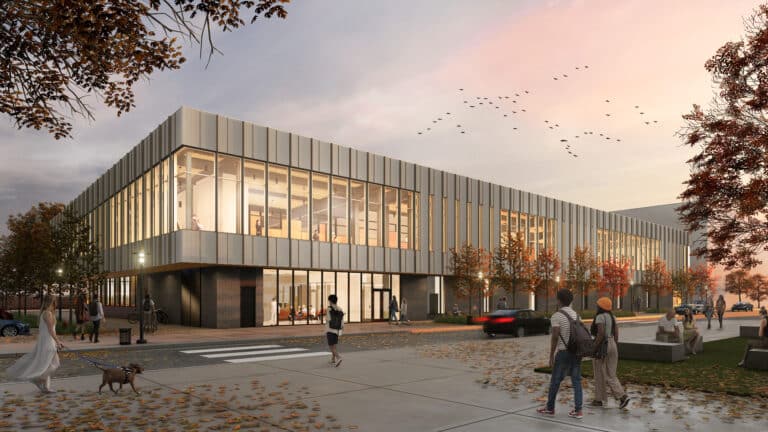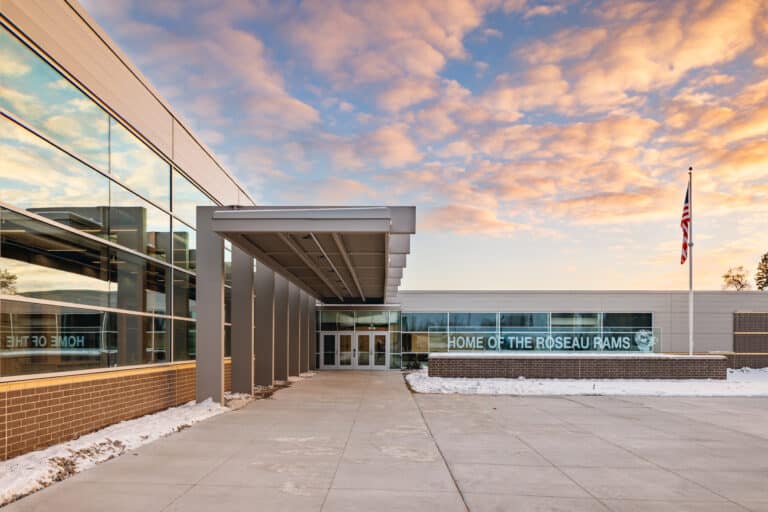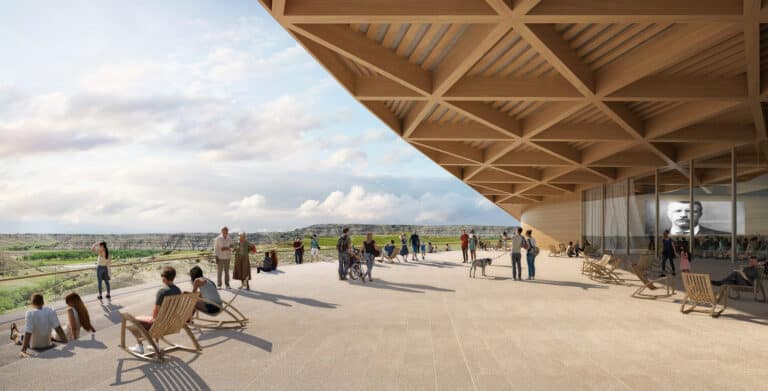While the pandemic was busy making germs our #1 enemy, JLG Architects has been busy taking a fresh new look at how the public interacts with (or avoids) high-touch surfaces – more specifically, the dreaded entrances and exits for restroom spaces in a multitude of public and school settings. Today, it’s not just shared toilets and sinks that scare us, it’s also a newly embedded fear of doors that may hold the key to at least one attainable cure. To unlock solutions, we evaluated the set standards for restroom entry and exit, challenged the norm, and asked ourselves how and where doors could be removed to achieve best practices in health, accessibility, and efficiency. There’s no doubt we value our privacy, but do we really need so many doors?
Unlocking Safety & Sanitation
As architects of higher education buildings and other public facilities, it is our job to take appropriate action to help protect families, communities, and employees. Health concerns influence how we live — a quality of life issue we’re bound to see more emphasis on in a post-pandemic world. Restrooms that don’t provoke fear for our health and safety are a critical component of any balanced public setting.
Yes, restroom entry doors can create an additional sense of privacy and help reduce concerns of odors or traveling sounds. However, these issues can also be effectively resolved without adding more doors. With modern innovation, odors can be eliminated with advanced technologies in mechanical ventilation. After all, restrooms are negatively balanced rooms, meaning the ventilation system return ducts pull more air from the room than the supply ducts push in.
We don’t need entry doors to avoid sound transference either; many places already have enough general background noise, and some utilize music or white noise to raise users’ level of comfort. If you’ve been to an airport, sports arena, or large convention center, you might have noticed the lack of doors – instead of a typical entry where the door opens directly into a room, entries into multi-stall restrooms often include an added wall for privacy which requires users to turn around a corner.
Dignity Without Doors?
So, it is possible to preserve our dignity without doors? As architects, we find visual privacy through walls instead of entry doors, a concept that provides universal access for all and significantly reduces challenges for handicapped individuals. Door clearances required by ADA are minimums, meaning the clearance works for most, but can be challenging for others. We also need to ensure the pull weight strength required to open the door is within the handicapped required range, which can be a struggle
for maintenance to keep it set correctly. This can all be remedied with clean and innovative design solutions that eliminate restroom entry doors where possible. More specifically, we’re circling back to the concept of universal restroom design – a doorless, simplified entrance. Here, cleverly placed walls create privacy, and doors are restricted to individual, enclosed toilet stalls.
Removing restroom entry doors offers substantial benefits in sanitation and safety, while aligning with other future-driven design changes happening in these types of spaces. Just as more touchless items are being provided in restrooms, such as automatic toilet flush, hand soap, water faucets, and dryers, removing entry doors on multi-stall public restrooms can greatly benefit the effort.
As a former university architect, I have implemented these innovative designs in several campus projects where our goal was to provide universal access. Our JLG team also saw substantial value in this concept, recently orchestrating the removal of restroom doors at a Minnesota high school. Here, the existing restrooms near the cafeteria needed to be updated to meet handicap accessibility requirements. Due to the limited space at the entries, providing the required door clearances was not going to be possible without the demolition of more existing walls and reducing the number of plumbing fixtures. These walls already provided visual privacy, so the decision was made to remove the doors and provide simple, straight-forward universal access for everyone.
Innovative Accessibility
We understand there are times when having an entry door serves other purposes, such as for security, when spaces need to be occasionally locked, and when restrooms are accessed from the exterior and mechanical ventilation is needed to heat or cool the enclosed space. Other than these few instances, many existing restrooms could be strong candidates for entry door removal. For times when doors are needed, we look to have doors recessed into the restroom and swing outward. We must keep in mind that while every handicap individual has different physical challenges, it is typically much easier for them to push a door open than to pull.
While working on a university campus, I saw first-hand the frustration of a handicap friend and fellow co-worker who found themselves stuck in a restroom that met all handicap requirements. With an in-swinging door, they were physically unable to pull the door open; then forced to wait for others to enter before being able to leave. It’s something I’ve never forgotten.
The emergence of COVID-19 has amplified the urgency of both known and unprecedented issues, but it’s also allowed the creative and innovative minds at JLG Architects to zero in on better solutions for you and your users. You could say your health and safety are in our capable (and very clean) hands. With creative design, we can remove the barrier of doors and still demonstrate a sense of privacy and flow to help the public and your students feel safer in the wake of COVID-19. Smart, universal
design places the power to enhance accessibility and prevent the spread of viruses within reach – opening doors that explore new, useful design solutions to preserve your users’ health, dignity, and safety.





